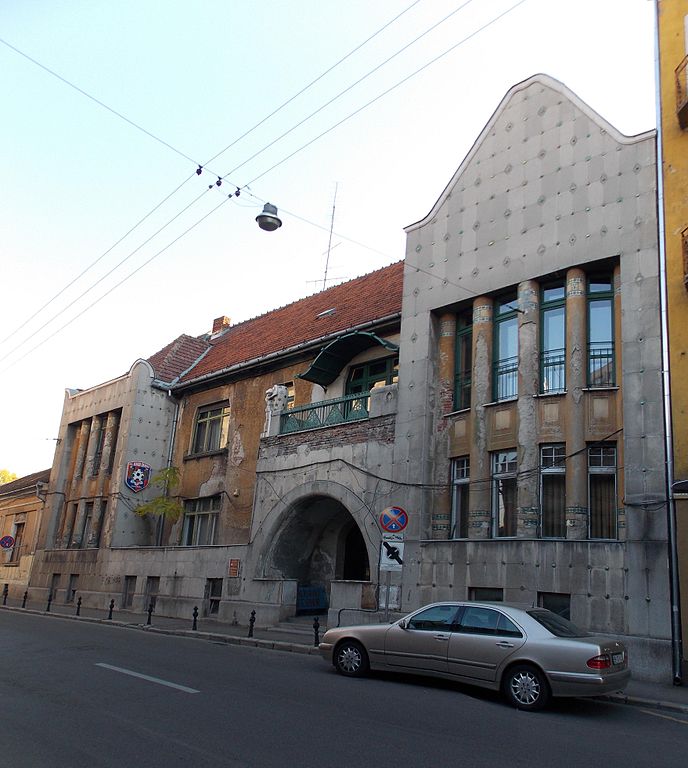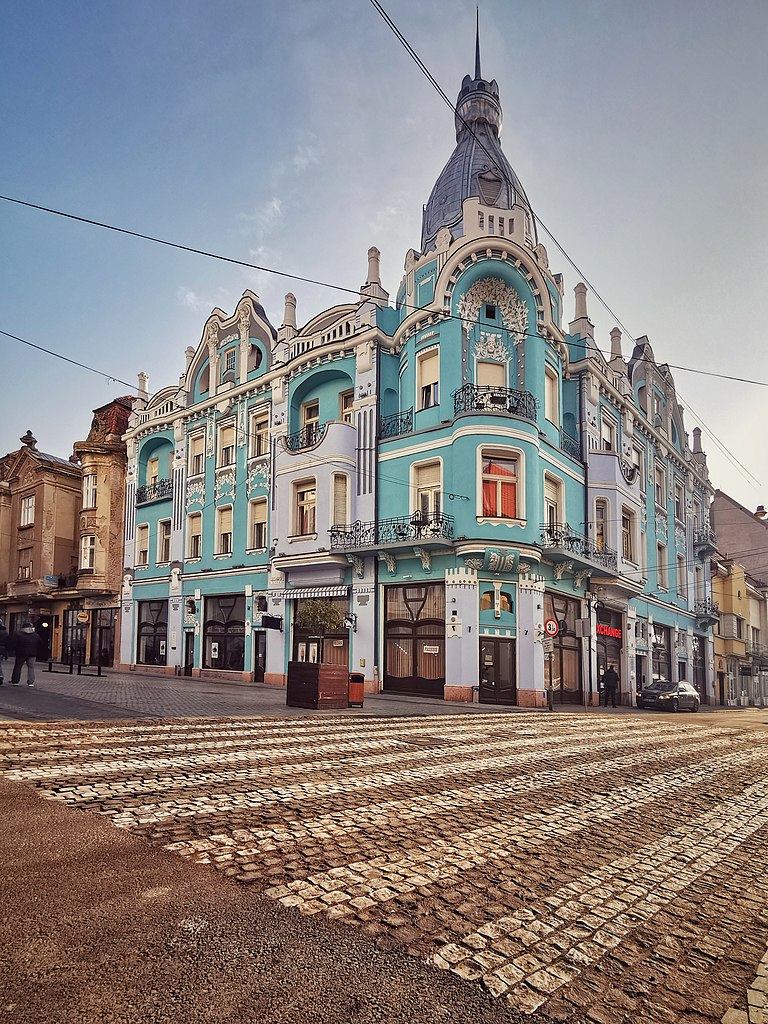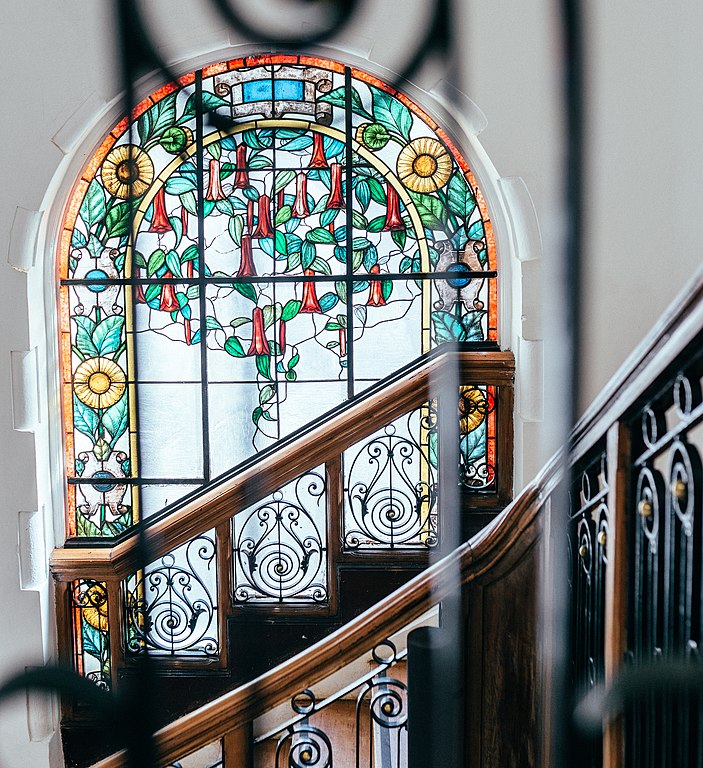Thessaloniki gets ready for its metro launch in November
The underground rapid transit lines have been under construction for almost two decades due to various project delays
 TheMayor.EU logo
TheMayor.EU logo ARTNOUVEAU 2 will take advantage of architectural heritage to promote more sustainable cooperation and urban development
On 8 September, the partners in the ARTNOUVEAU 2 initiative met in Darvas La Roche House in Oradea, Romania for a project presentation. Deputy Director of the Chief Architect’s office of the city Adriana Lipoveanu showcased Oradea’s project to enhance urban mobility and promote urban planning cooperation through the architectural heritage of the city.
ARTNOUVEAU 2 is a project started by the city of Oradea with the aim of protecting and promoting the Art Nouveau architectural heritage of the Danube Region. The project is funded primarily by the European Union and it involves institutions from six countries: Hungary, Slovakia, Romania, Austria, Croatia and Serbia.
 Dravas La Roche House in Oradea, Source: ArnoldPlaton on Wikipedia, CC BY-SA 3.0
Dravas La Roche House in Oradea, Source: ArnoldPlaton on Wikipedia, CC BY-SA 3.0
The project has a budget of 1.8 million euros with 85% coming from the EU and the rest from the participants. These funds are then split between the participating institutions, so that each of them can do an independent project, with the aim of strengthening the connections between them, as seats of Art Nouveau architecture.
 Palatul Moskovits in Oradea, Source: Silviunastase on Wikipedia, CC BY-SA 4.0
Palatul Moskovits in Oradea, Source: Silviunastase on Wikipedia, CC BY-SA 4.0
These include Oradea City Hall, Foundation for the Protection of Historical Monuments in Bihor County, the National Heritage Institute - Bucharest (Romania), Museum of Applied Arts - Budapest, Museum of Applied Arts - Vienna, Museum of Arts and Crafts – Zagreb (Croatia), the Slovak University of Technology in Bratislava (Slovakia), Kodolanyi Janos University - Hungary and the National Institute for the Protection of Cultural Monuments Serbia.
Deputy Director Adriana Lipoveanu presented Oradea’s project focusing on mobility in the inner city and a transformation of public spaces centred around sustainable transportation. It also included a summer exchange programme for urban planners in Oradea, bringing together experts from all six countries and a promotional campaign about the city’s Art Nouveau heritage.
Currently, Oradea's architecture is a mix of Communist-era apartment buildings and ornate historic buildings in the inner city, a reminder of the time when it was part of the Austro-Hungarian Empire. In addition to Baroque and Neo-Classical buildings, the city has a remarkably rich collection of Art Nouveau architecture.

It is quite easy to spot an Art Nouveau building because of its curved, flowing asymmetric characteristics. Distinctively shaped façade and interior elements, accompanied by mosaics and stained glass, parabolas and hyperbolas allow for a certain dynamism to be inscribed on these buildings.
According to local authorities, Oradea is probably the Romanian city with the highest number of buildings representing 1900s European architecture, comparable to more famous cities from Central Europe.

The underground rapid transit lines have been under construction for almost two decades due to various project delays

Now you can get your wine in Talence by paying directly in Bitcoin

That’s because the state has to spend money on updating the railway infrastructure rather than subsidizing the cost of the popular pass

Rethinking renewable energy sources for the urban landscape

The examples, compiled by Beyond Fossil Fuels, can inform and inspire communities and entrepreneurs that still feel trepidation at the prospect of energy transition

Now you can get your wine in Talence by paying directly in Bitcoin

The 10th European Conference on Sustainable Cities and Towns (ESCT) sets the stage for stronger cooperation between the EU, national and local level to fast track Europe's transition to climate neutrality.

At least, that’s the promise made by the mayor of Paris, Anne Hidalgo

The underground rapid transit lines have been under construction for almost two decades due to various project delays

At least, that’s the promise made by the mayor of Paris, Anne Hidalgo

Hostal de Pinós is located in the geographical centre of the autonomous region

Despite its church-y name, the district has long been known as the hangout spot for the artsy crowds

Urban dwellers across the EU are having a say in making their surroundings friendlier to people and the environment.

Forests in the EU can help green the European construction industry and bolster a continent-wide push for architectural improvements.

Apply by 10 November and do your part for the transformation of European public spaces

An interview with the Mayor of a Polish city that seeks to reinvent itself

An interview with the newly elected ICLEI President and Mayor of Malmö

A conversation with the Mayor of Lisbon about the spirit and dimensions of innovation present in the Portuguese capital














